The Ford Escort name was first used on a van-derived estate version of the 100E series, but it was the 1968 Mk1 Escort that catapulted the badge to the top of the sales chart. A replacement was badly needed for the Anglia to take on Vauxhall’s sharp-suited Viva, so work on the Escort had started in the mid-1960s, with Ford of Germany preferring a front-wheel drive idea. However, a more straightforward front-engined, rear-drive layout was chosen and a good deal of the development was carried out by Ford of Britain.
Harris Mann, who later went on to be a big influence on 1970s wedge designs, was responsible for the ‘Coke bottle’ lines and now immediately familiar ‘dog bone’ front grille shape. Ahead of the car’s launch in early 1968, Ford had been sending Escorts down the line at its German and UK plants, with some 11,000 cars assembled by its on-sale date in January ’68.

The first models on offer were all two-door saloons and, in the UK, there was a choice of standard, De Luxe, Super and GT trims. The first three versions came with a 1098cc four-cylinder ‘Kent’ crossflow engine with 43bhp, later upped to 45bhp. Not the speediest car on the road, at least this Escort was quicker than the France-only Escort 940 with a mere 34bhp on hand. For those wanting a bit more zest in their Escort, a 75bhp 1298cc version of the Kent engine was available in the Super and GT.
Hot on the heels, in every sense, of the standard range was the Escort Twin Cam in February 1968. It packed the same Lotus-Ford 1558cc double-overhead camshaft engine as used in the Cortina Lotus. It served up 105bhp for a 115mph top whack, and front disc brakes with servo assistance were standard to cope with the increased performance. Other standout features for the Twin Cam were flared arches that sat over wider steel wheels.
More mundane but vital to the success of the Escort was the introduction of the Estate and van versions in March and April 1968, respectively. Ford also added the option of an automatic gearbox in the April, but dropped it for the 1.1-litre engine in mid-1969 as it was as slow to sell as it was to drive. Much bigger news in August ’69 was the arrival of the four-door body style in the same trim options as the two-door, though not as a Twin Cam. Ford took this opportunity to mildly revise details such as improved electrics, a flush-fitting fuel cap, and moving the bonnet release handle to under the dash.
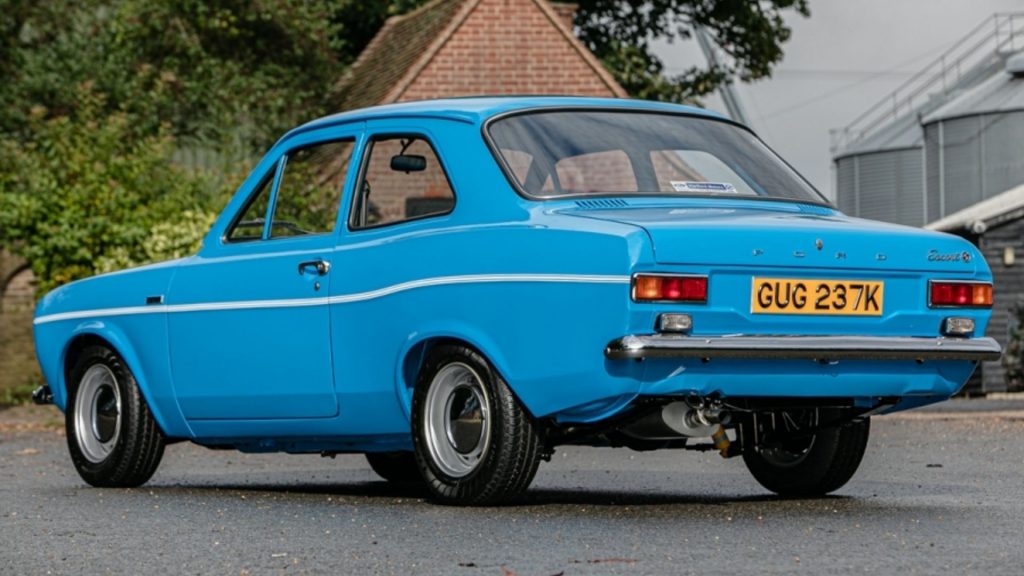
The RS1600 was the Escort’s most important event in 1970. Production started in the UK in April 1970 of this homologation special with a Cosworth BDA (Belt-Drive Type A) twin-cam engine. Although the 120bhp BDA had a 1599cc capacity, Ford quoted it as being larger to give it room to increase engine size for racing and rallying. With as much as 250bhp from the later RS1800 Mk2 Escort in competition, it proved an unbeatable combination with the agile handling of the Escort.
Production of the RS1600 shifted to Ford’s newly created AVO (Advanced Vehicle Operations) in October 1970, and the same factory was responsible for the Mexico that arrived in November. Looking much like the RS1600, the Mexico was created to celebrate Ford’s win in the gruelling London to Mexico World Cup Rally. It had all of the RS’s suspension, brakes and instruments, but power was from a more humble 86bhp 1.6-litre Kent crossflow motor.
In September 1971, Ford added the Sport model and watched the sales roll in. It was easy to see why buyers lapped it up as the Sport had the RS quarter bumpers, round headlights and flared arches, along with a black-painted rear tail panel. It looked the part and a GT-spec 1.3-litre engine gave a decent turn of acceleration.
Now on a roll with its fast Escort models, Ford launched the RS2000 in July 1973 and a legend was born. Gone was the Kent engine, replaced by a 100bhp 2-litre Pinto motor from the Cortina. In the Escort, it meant 0-60mph in 9 seconds and a 108mph top speed. British buyers loved the RS2000 and, out of around 5300 made, approximately three quarters were sold in the UK. Ford also tempted in buyers with a Rally Lighting Pack that came with big front spotlights, and a Race Pack consisting of roll cage, Bilstein shock absorbers, oil catch tank, fireproof rear bulkhead, battery isolator switch, and front seat harnesses.
In January 1975, Ford unveiled the Escort Mk2 and a new, squared-off style replaced the rounded Mk1. Codenamed ‘Brenda’ during its development, the Mk2 went from concept to showroom in just two years, helped by using the same floorpan and running gear as the late-model Mk1. A larger glass area, greater refinement, and more passenger space marked out this new Escort. Ford offered more trims, comprising base, L, GL, Sport and luxurious Ghia in two- and four-door saloons, with the Popular Plus following in July. The estate and van also went on sale at the same time rather than being staggered as with the Mk1. Ford even created the RS1800 right from the beginning as motorsport interests demanded a faster car.
In March ’75, the new RS2000 was announced using the same engine as the Mk1 but with a radical droop-snoot front end. The quad headlight nose was not to all tastes, but it worked and reduced aerodynamic drag and improved fuel economy by 3mpg compared to Ford’s tests of an RS2000 with the standard front end.
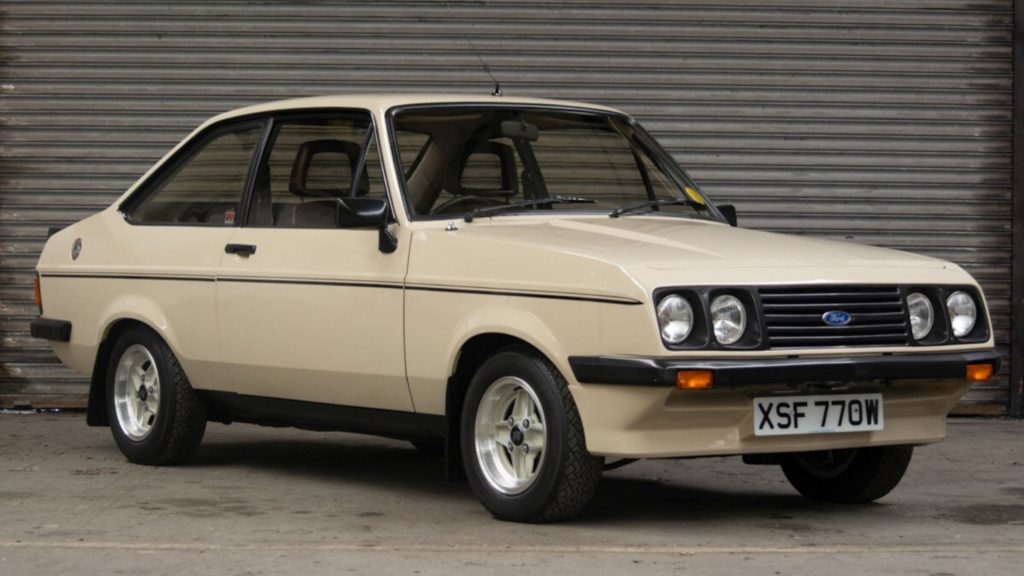
At the same time the RS2000 went on sale in early 1976, Ford launched the RS Mexico. This 1.6-litre Pinto-powered car should have been a sales star as it looked like the RS1800s that were winning everything in rallying, yet buyers wanted the added urge of the RS2000. So, Ford replaced the RS Mexico with a base spec RS2000 in November 1978. Other than that, and a handful of limited edition models such as the Linnet, Harrier and Goldcrest, the Mk2 saw out rear-drive Escort production in July 1980 to be replaced by the front-wheel drive Mk3.
What’s an Escort Mk1 or Mk2 like to drive?
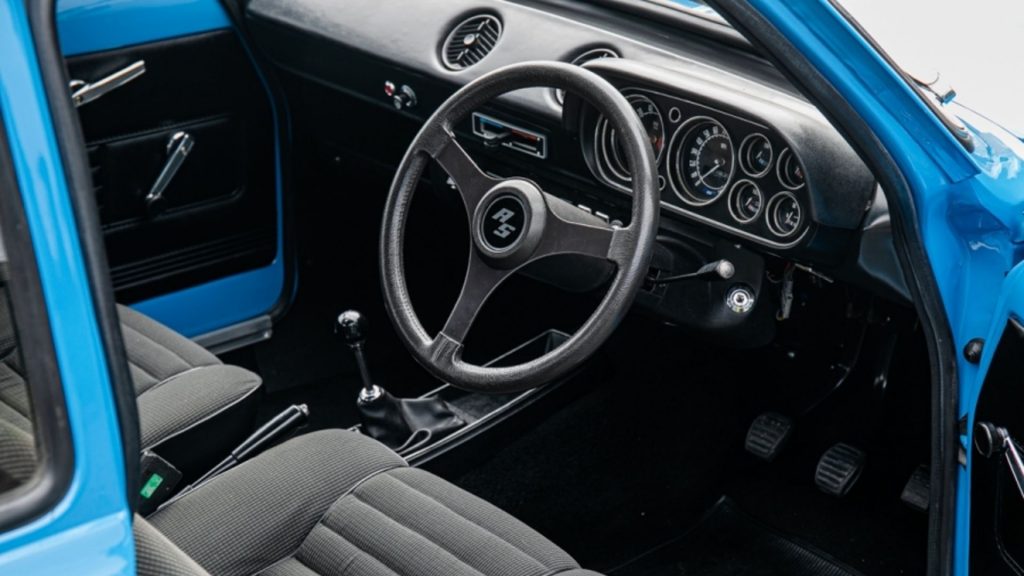
It doesn’t matter which Mk1 or Mk2 Escort you try, they are all great fun from behind the wheel. The key difference, unsurprisingly, is how quickly the car gets up and goes depending on its engine spec. Let’s start with the lesser models with the 1100 and 1300 crossflow motors. Don’t be put off by the smaller capacities as they have plenty of low-down torque and are happy to rev. Stick with a manual gearbox and you’ll also enjoy one of the smoothest, most precise shifts of any classic car.
Rack-and-pinion steering on all Escorts gives the Ford great feel and feedback, making it an agile car on flik-flac lanes. The simple rear-drive chassis underscores this, while the MacPherson strut front suspension and basic leaf spring rear with live axle works far better than it has any right to. In these less potent Escorts, the set-up lets you carry speed through corners rather than surrendering momentum. Just as well as the drum brakes of base Mk1s are okay but a far cry from the more effective discs used on most models.
This brings us on to the quicker Escorts. Their reputation is massive and it’s easy to understand why the moment you get going in any of them, whether it’s a Twin Cam, RS1600, Mexico or RS2000. Acceleration is strong and the engines spur you on, helped by slick gearboxes. With more power, the rear wheels can be loosened easily in tighter turns, but the quick steering gathers it all up to make this sort of thing all part of the fun. The more exotic homologation models show their motorsport intent in the way they are set up, which makes the RS2000 in either Mk1 or Mk2 the sweet spot, even if the Pinto engine is a little heavier than the free-revving Kent crossflow.
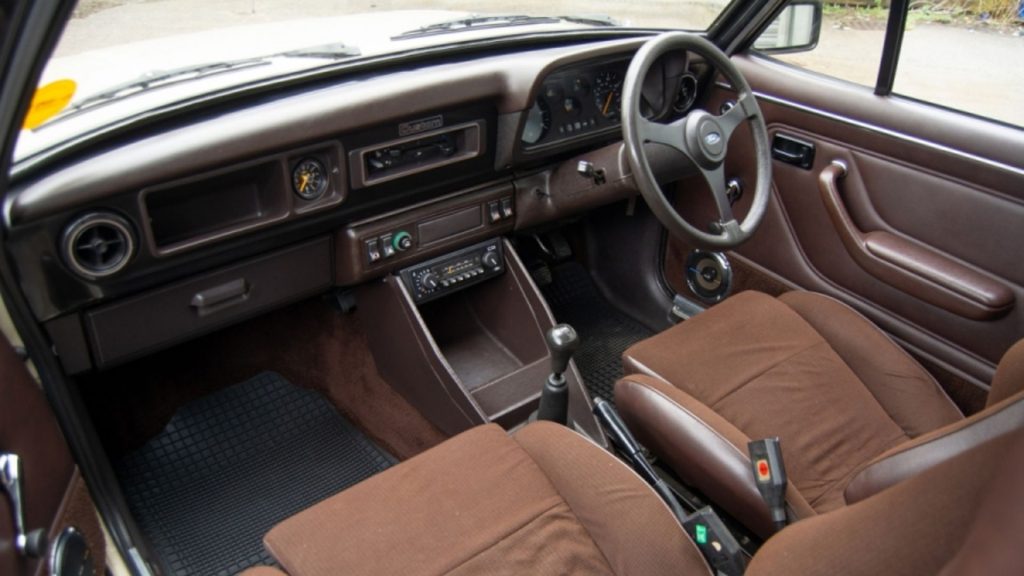
For some, a two-door Escort will be the only choice for the looks and rally connotations, but the four-doors are a practical, and cheaper, choice for those taking the family along. Estates are two-doors only but come with a big boot, while the vans remain useful load haulers. In all, the driving position is good and the dash is clear and logical. There’s not much else to the interior unless you find a Ghia with its plusher wood trim. Sportier models have seats with greater support and, in Mk1s, this also meant fabric usually replaced slippery vinyl upholstery. The interchangeability of parts with Escort models means you can tailor any of them to your tastes and needs, which explains why you see RS-spec estates and vans, and this is very much part of the Escort scene, just as it was throughout the 1980s and ’90s when it was little more than affordable fun.
How much does an Escort Mk1 or Mk2 cost?
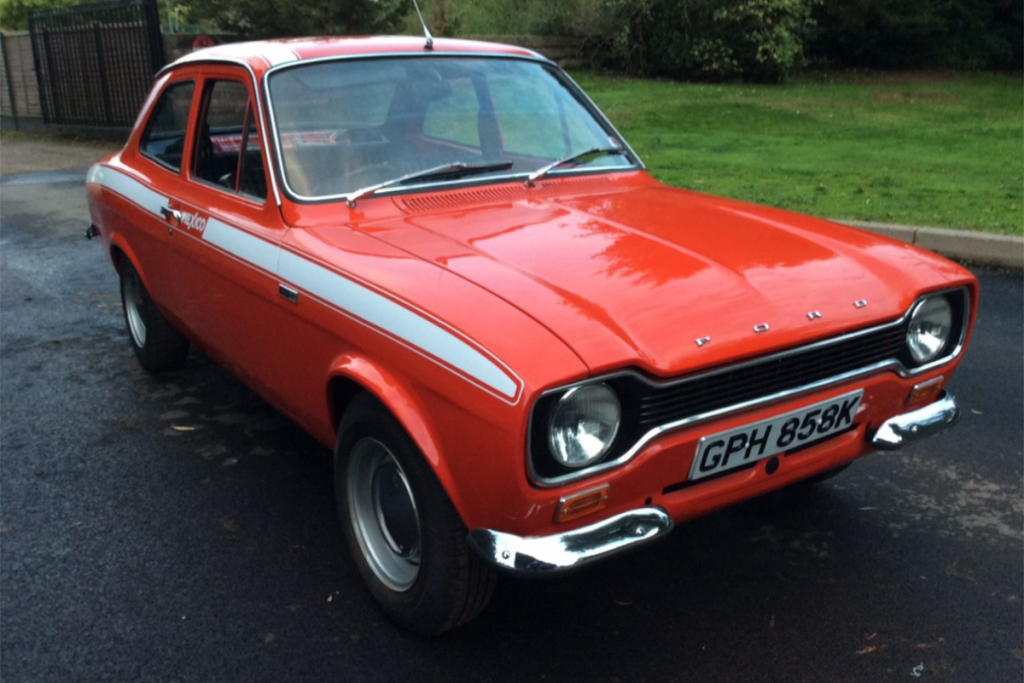
Anyone old enough to remember Mk1 and Mk2 Ford Escorts selling for fifty quid in running order will should also be wise enough to chalk this down to experience by now. Escort values started to climb in the 1990s as their simplicity to work on, restore and tune saw them in the vanguard of a new wave of more modern classics, helped by the enduring appeal of the RS models. Today, Hagerty’s Valuation Guide puts even the humble Mk2 1100 four-door saloon at £6800 in good condition, and £10,300 in excellent condition. A concours example could fetch more than £12,000. If you want a concours quality car, you can double that number, but thanks to the large number of Escorts available there are plenty of cars around to suit most budgets.
Values of Mk1 Escort models tend to be slightly ahead of their Mk2 counterparts as the earlier car is more sought-after. Two-door cars are also in greater demand than four-doors, partly fuelled by the popularity of the two-doors for rallying in classic and many modern events. As a result, a Mk1 Mexico in good nick will be around £25,000, while a perfect example will add another £20,000 to that tally – as you can see by browsing the Hagerty Price Guide. As for the rarer Twin Cam and RS1600 models, you’ll need £70,000 to bag one in showroom fettle.
A Mk1 RS2000 in decent order will come with a price tag around £27,000, but the good news is Mk2 RS2000s are still on offer from £15,000 to make them a tempting choice. On the other hand, if you fancy a Mk2 RS1800 for the full-blown homologation experience, £50,000 is opening money for a half decent car and twice that is the going rate for immaculate original or restored examples.
What goes wrong and what should you look for when buying an Escort?
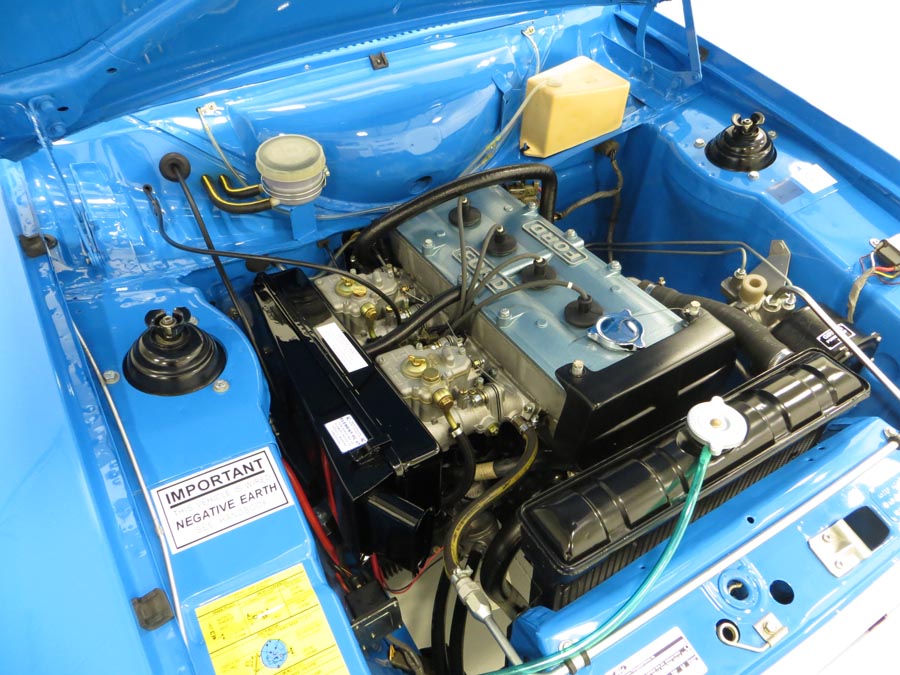
The Twin Cam and BDA engines are specialised units that require expert inspection, so we’ll stick to the main engines offered in the Escort here. All of the Kent crossflow motors are robust and a little oil leaking from the rocker cover isn’t unusual, so a new gasket should sort this. A tapping noise from the top of the engine indicates worn cam followers.
The Pinto engine in the RS2000 has a cambelt, so check it’s been changed every 25,000 miles or three years as few will cover significant miles. Ask the seller which oil has been used in the engine as camshaft wear is common due to the wrong grade of lubricant. A puff of blue smoke from the exhaust indicates worn piston rings or valve stem seals. Full rebuilds are not expensive or difficult with either the Pinto or Kent units, and all parts are available to put them back as standard or upgrade for more power.
Any grumbling from a manual gearbox points to imminent work being required, and check the transmission doesn’t jump out of gear on the overrun. Automatics are tough and understressed, so just make sure they change smoothly and the fluid has been replaced recently. The rest of the Escort’s running gear is all easy to work on and parts availability is second to none. A worthwhile upgrade on early base cars is swapping from drum brakes to discs if you intend to use the car a lot. Hard-driven Escorts can suffer from a noisy differential, but crown and pinion repair kits are available.
Now we come to the Escort’s body and rust. Essentially, if it’s made of metal, check for corrosion, especially the inner front wings, suspension turrets, bulkhead, around the front and rear screens, wheelarches, sills, floorpans, boot floor, and valences at both ends. Be ruthless in checking for rust as it will be the biggest cost in sorting an Escort. The good news is every panel can be bought to repair these cars.
Some trim and interior items can be very hard to track down, particularly for lower spec models. With the faster Escorts, there’s a ready market for parts and reproduction items. Check the dashboard in the car you are considering is correct for the model as many have been swapped to upgrade the interior, and the same goes for steering wheels.
Which is the right Escort for you?
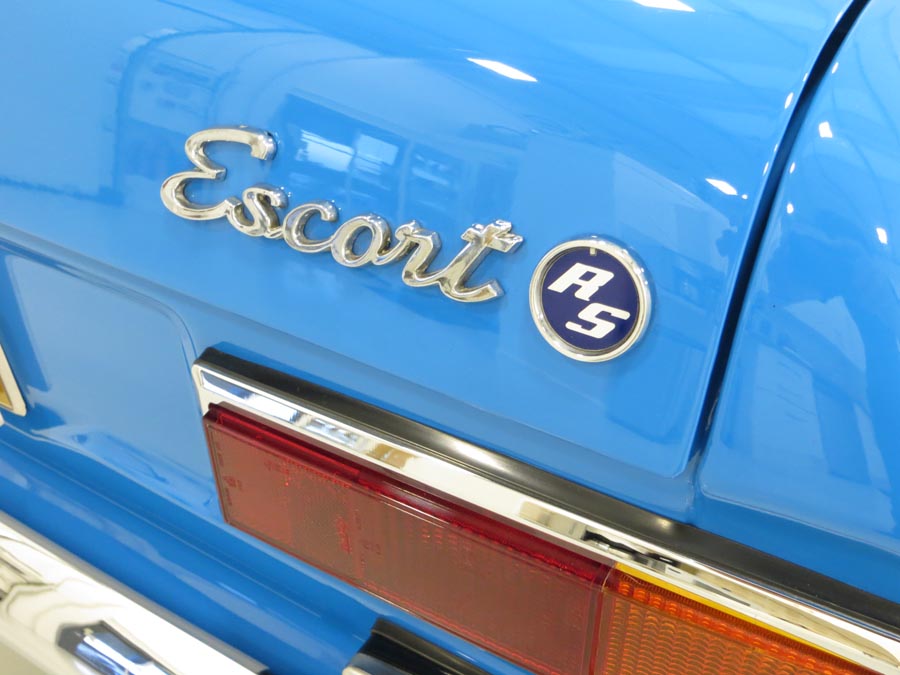
Many are drawn to the Ford Escort for its sporting appeal, so the big decision here is whether you want an original version or a car that has been rebuilt from a lesser model. You’ll also have to choose between standard or modified, though luckily there are plenty of both about. Collectors will look for the rarer Escorts, such as the Twin Cam and RS1600 Mk1 or the Mk2 RS Mexico. For us, the perfect pitch with the Mk1 is the Mexico for its balance of power, handling and price, while the Mk2 RS2000 manages the same blend for those who prefer the later car’s more squared-jawed looks.
Don’t discount the four-door, estate and van versions, though. All are enjoyable to drive and have the same Escort dance-step handling. Given how many fast Escort originals and recreations are out there, a standard base model could help you stand out in the crowd where once it would have melted into the background.
Read more
Little red devil: MST Mk2 review
Ford Escort at 50 – Our Top Ten Early Escorts
Richard Hammond and The Smallest Cog’s first project – a restored Ford Escort RS2000 – could be yours










I remember having a ride in a MK1 Escort in 1970 the way the car handled around the roundabouts and with its slick little gearchange was a sign of things to come!
A far cry from my fathers old F series Victor
We in Strathclyde Police used the Mk2 1.3 Pop Plus as Panda Cars and had great service out of them. When ours ( SUS143R) was 2 years old when I moved on had covered over 120,000 miles and in Al that time other than a few dents mechanically only needed a set of rear shockers.